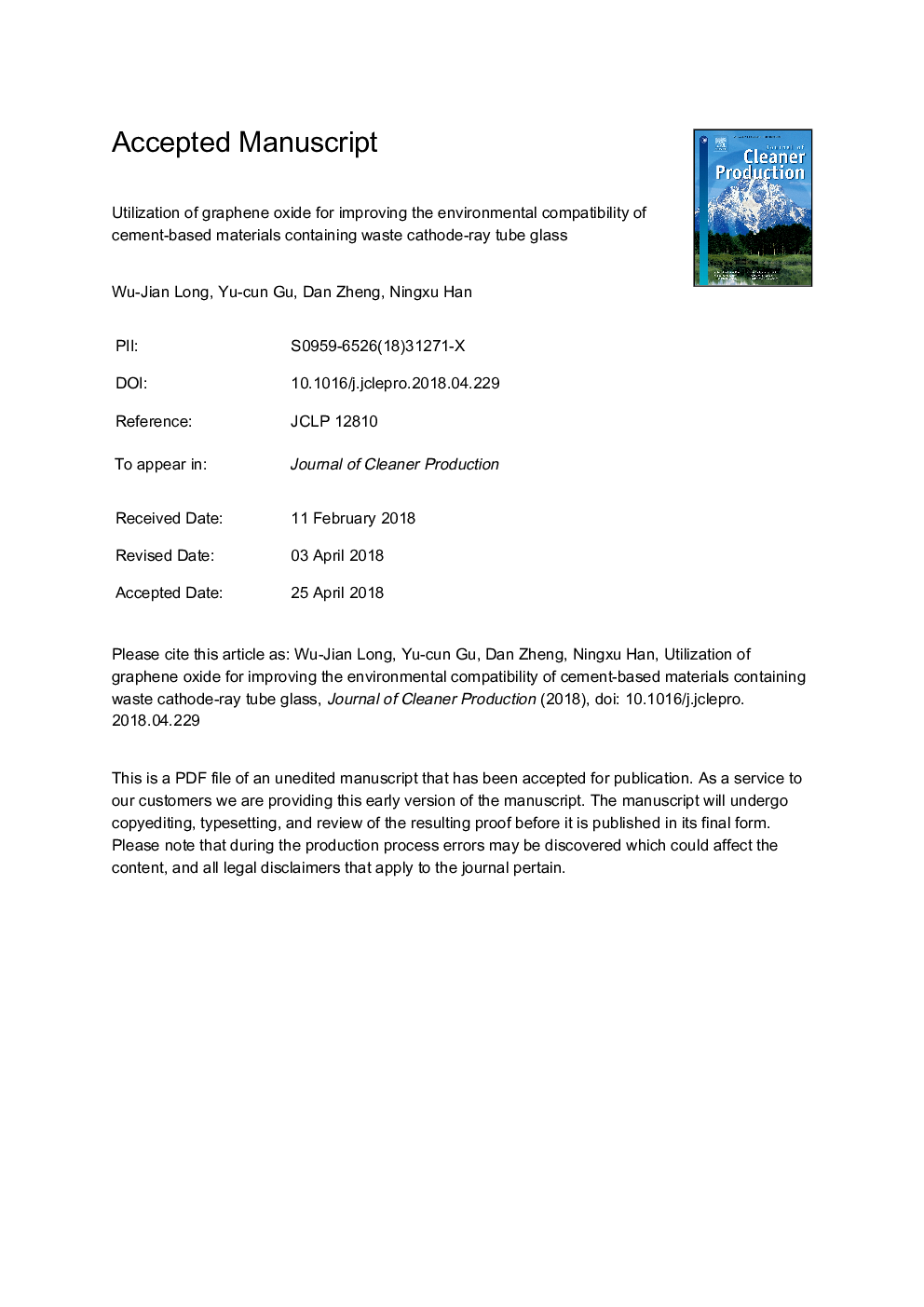| کد مقاله | کد نشریه | سال انتشار | مقاله انگلیسی | نسخه تمام متن |
|---|---|---|---|---|
| 8094480 | 1522061 | 2018 | 40 صفحه PDF | دانلود رایگان |
عنوان انگلیسی مقاله ISI
Utilization of graphene oxide for improving the environmental compatibility of cement-based materials containing waste cathode-ray tube glass
ترجمه فارسی عنوان
استفاده از اکسید گرافن برای بهبود سازگاری زیست محیطی مواد سیمان حاوی شیشه های شیشه ای کادمیوم کات
دانلود مقاله + سفارش ترجمه
دانلود مقاله ISI انگلیسی
رایگان برای ایرانیان
کلمات کلیدی
اکسید گرافن، شیشه شیشه ای کادمیوم زباله، شستشوی سرب، ریز ساختار، منطقه انتقال متقابل، ارزیابی محیط زیست،
موضوعات مرتبط
مهندسی و علوم پایه
مهندسی انرژی
انرژی های تجدید پذیر، توسعه پایدار و محیط زیست
چکیده انگلیسی
Utilization and processing of waste cathode ray tube (CRT) glass causes serious environmental damage due to its presence of lead and huge growing volume. The use of waste CRT glass in cement-based materials is an effective recycling method, whereas the huge amount of waste CRT glass usually results in severe lead leaching and weakened interfacial bonding. This paper presents an effective method for improving the lead immobilization and microstructure of the interfacial transition zone between cement paste and waste CRT glass (30 and 60â¯wt% of fine aggregates) using graphene oxide (GO) (up to 0.10â¯wt%). In order to investigate the environmental compatibility of the GO-waste CRT cement mortars, the standard toxicity characteristic leaching procedure (TCLP) was performed for lead leaching evaluation, and their mechanical properties were examined. Moreover, thermogravimetric analysis (TGA) and scanning electron microscopy (SEM) observation with backscattered electron mode were conducted. The results of TCLP indicate that the degrees of lead leaching from the waste CRT cement-based materials with both fine (0.075-0.15â¯mm) and coarse (8-9.5â¯mm) size containing 0.1â¯wt% GO were significantly lower than the regulatory limit specified by the United States Environmental Protection Agency and Chinese standard. The data obtained via mechanical testing revealed that the presence of 60â¯wt% waste CRT reduced its 28-day compressive and flexural strengths only slightly, whereas 0.1â¯wt% GO addition significantly increased their values. By analyzing the thermogravimetric and microstructural results, it was found that the increased formation of portlandite (CH) and calcium-silicate-hydrate (CSH) caused by GO addition reduced the number of interconnected cracks and pores and improved the properties of the interface between waste CRT glass and cement paste. This obtained improvement in environmental compatibility of the waste CRT cement mortars not only examines the reduced lead pollution caused by GO addition, but also sustainably promotes the industrial utilization of toxic waste CRT glass.
ناشر
Database: Elsevier - ScienceDirect (ساینس دایرکت)
Journal: Journal of Cleaner Production - Volume 192, 10 August 2018, Pages 151-158
Journal: Journal of Cleaner Production - Volume 192, 10 August 2018, Pages 151-158
نویسندگان
Wu-Jian Long, Yu-cun Gu, Dan Zheng, Ningxu Han,
